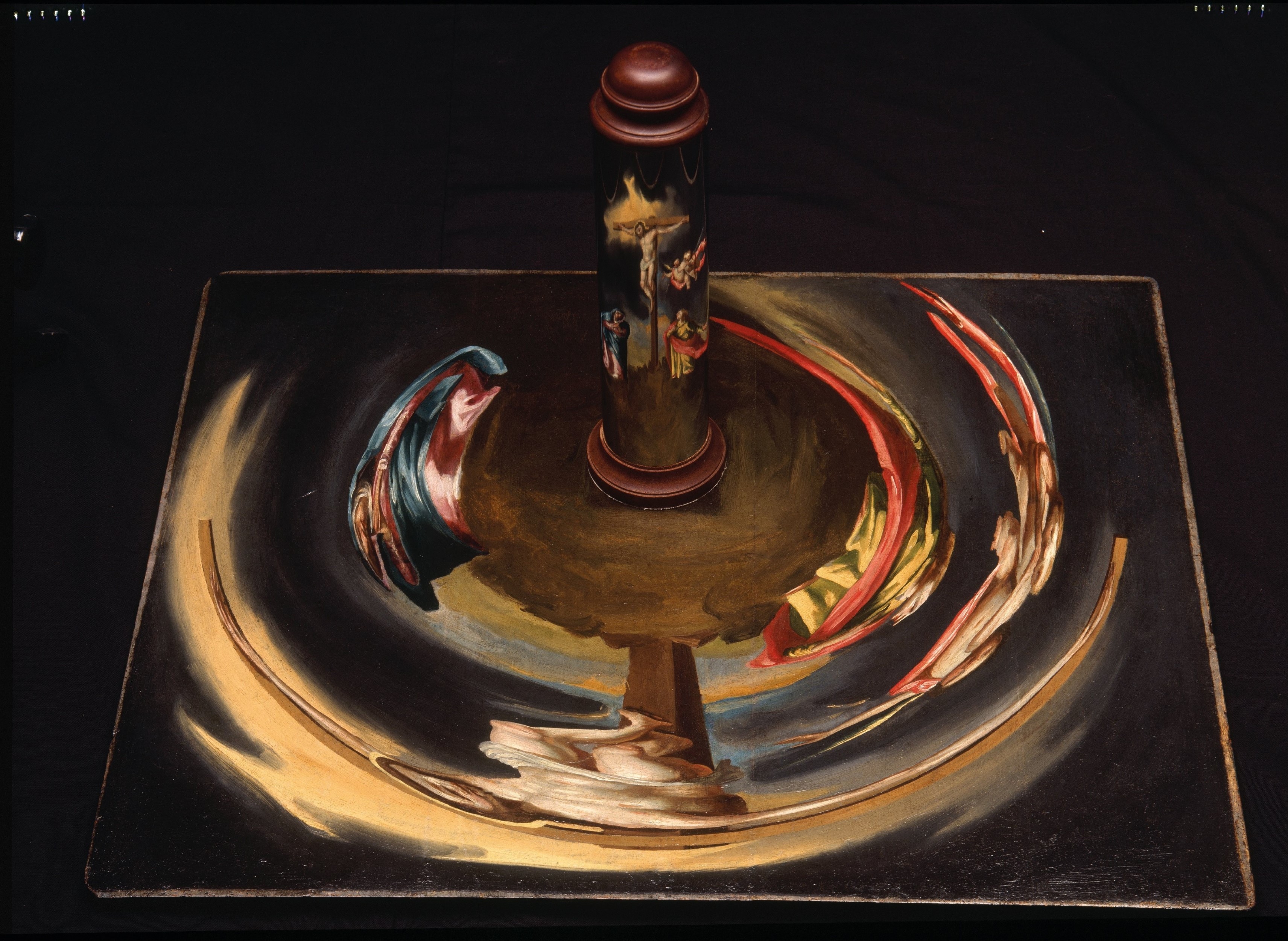The artistic interplay of perception, appearance, and reality has fascinated artists as far back as Leonardo da Vinci. Two decades later, in the 17th century, the painted anamorphosis—an ancient Greek word roughly meaning “to form anew”—became a genre in its own right. The intellectual background of this development stemmed from the endeavors at the time to grasp the complexity of the world, but at the same time to question our ability to perceive it. The colorful, concentric rings the viewer encounters when looking at the anonymous painting hanging in the room of 17th-century Dutch and Flemish painting seem like smears on a windshield. If we were to regard the work in terms of contemporary art, that is, as an abstract antithesis, would its function be to open up new insights into Old Master paintings? The materials and technique leave the viewer in doubt. Or is the idea of central perspective propagated since the Renaissance, which functions according to the guiding principle of a fixed viewpoint, called into question here? Closer scrutiny enables the viewer to recognize deformed figures, and therefore to surmise that the concern here is for the latter issue. Ultimately, a cylindrical, convex mirror—such as may be viewed in the reproduction of the painting lying horizontally in the room—provides us with certainty: The painting is a mirrored anamorphosis depicting the Crucifixion of Christ. In our own time, the Swiss artist Markus Raetz carries on the long tradition of anamorphosis painting in three-dimensional form. For him as well, what has been portrayed does not stand so much at the forefront as the way it is perceived. Before this background, the artist challenges the viewer to interact with his work: Only by walking around the sculpture of The Contortionist does he see how a rectangular figure transforms into undulating curves, before it then proceeds to take on its original form again. As a “static” shape that at first seems to be classic, but then defines itself through movement, Raetz’s sculpture is an important link between the anamorphosis painting of the 17th century and the media art of the 21st century.
de

